Growing Our Own
Workforce Development Program Introduced to Fill Skills Gaps
Martín Valadez was having lunch with a business acquaintance several months ago, casually sharing that he was taking a job with a new workforce development program called Heritage@Work being developed by Heritage University. He wasn’t trying to drum up business… not yet. He hadn’t even started his new job as the program director! But the response to his announcement, which was repeated at subsequent lunches with additional business contacts, was always the same – “Wow, I think we need that!”
What he quickly discovered is the workforce development program, while originally developed by Heritage to address a need in the agricultural industry, touched on an unmet need throughout the Yakima Valley and Tri-Cities.
David Wise, Vice President of Advancement and Marketing, said Heritage learned, through conversations with local growers and others that a skills gap existed in the region. “There was a need for short- term training programs first in agricultural companies,” said Wise. “The labor market is tight, and these companies are evolving and becoming more high-tech, so they need additional workforce skills that can also lead to greater, more challenging positions for their employees.”
However, what they learned, said Wise, is that the need for up-skills was more widespread than just farm workers… it cuts across all industries, from financial institutions to municipalities to health care. “There is an education gap between high school and college that we discovered,” confirmed Wise. “Businesses who empower their employees find they are more likely to stay and grow their careers and, as a result, their earning potential. Through Heritage@Work, the employer retains good people, and our university provides a much-needed service.”
CUSTOMIZED TRAINING MODULES UPSKILL EXISTING WORKFORCE
Heritage@Work is about meeting practical and specific skills deficiencies within companies. The training provided is different for each organization, customized tothe workforce and the goals of the business. Topics like supervisor training, professional writing, leadership, ethics, and accounting basics are common requests across organizations said Valadez. But there are also niche areas like governmental accounting or human resources practices in unionized workplaces, that apply directly to one company.
“Heritage@Work is driven by the customers, so it’s very focused on how to meet their needs,” said Valadez. “We developed it not to compete, but to meet a need that no other organization is structured to meet. We don’t want to reproduce what anyone else is doing.”
Valadez was the perfect candidate to lead this charge. He brings years of experience in instruction and curriculum development as a former college professor of history and ethnic studies. Later, he moved into a career in business development and served as the president of the Tri-Cities Hispanic Chamber of Commerce. This dual perspective helps him see both sides of the partnership clearly. He can relate to the concerns of a business while also leveraging his expertise in higher education to find solutions.
NEEDS ASSESSMENT DETERMINES PRIORITIES AND GOALS
This partnership, regardless of the company or industry, begins the same – with a thorough needs assessment. “Many customers already know what they want,” explained Valadez. “With others, we meet with a number of people in the organization and put together recommendations based on what we’ve heard, confirming their priorities.”
Valadez has a full plate, managing the logistics of the curriculum, the instructors and the venues. Some are one-off training sessions while others are comprehensive courses that run for many months. He writes some of the curriculum and recruits experts, from higher education or the business world, to write other parts and then conduct the training. The perfect candidates are subject matter experts who are also engaging in the classroom. His connections in both higher education and the community have helped.
“I may use current or retired professors or current or retired professionals in a specific field or industry,” he said.
TRAINING MODULES MAY DOUBLE AS CONTINUING EDUCATION OR COLLEGE COURSEWORK
The name of the game is providing businesses with custom skills training, in which they get exactly what they are paying for. Some want the classes to count toward continuing education credits for their employees while others ask about making the trainings available for college credit so an employee can pursue a degree at Heritage. All of those moving parts fall under Valdez’s auspice.
In a recent example, he sought out faculty in the English department to determine whether a 16-hour workforce-training curriculum might transfer to Heritage as a one-credit class. Valadez said the curriculum is rigorous and more application than academically focused. “Everything in the workforce training modules is practical. There’s a lot of continuous conversation and a lot of feedback from organizations.”
To ensure the training is delivering and equipping the employees as it was designed, Heritage@Work asks participants to complete assessments and provide feedback at the beginning and the end of the training. “We need to demonstrate there is growth and learning,” said Valadez.
Heritage@Work was championed by President Andrew Sund, Ph.D., who oversaw a highly-successful program like it at his previous institution and “lit the fire” at Heritage, said Wise, who was tasked with researching the demand before the program was introduced. Heritage board member John Reeves was another strong proponent, focused especially on how it would benefit farm workers and the agricultural industry. He was instrumental in collecting stakeholders and holding focus groups to make the idea a reality.
Just twelve months later, Heritage@Work is up and running, and generating a lot of excitement, all without a dollar spent on formal marketing! “It’s been gratifying,” said Wise. “It’s a unique opportunity for us – to help those who are already employed contribute more while also providing a diversified revenue stream that contributes to the overall financial health of our university.”
To learn more about Heritage@WORK, visit heritage.edu/workforce.


